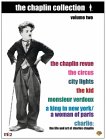| Reviews & Columns |
|
Reviews DVD TV on DVD Blu-ray 4K UHD International DVDs In Theaters Reviews by Studio Video Games Features Collector Series DVDs Easter Egg Database Interviews DVD Talk Radio Feature Articles Columns Anime Talk DVD Savant Horror DVDs The M.O.D. Squad Art House HD Talk Silent DVD
|
DVD Talk Forum |
|
|
| Resources |
|
DVD Price Search Customer Service #'s RCE Info Links |
|
Columns
|
|
|
Chaplin Collection, Vol. 2, The
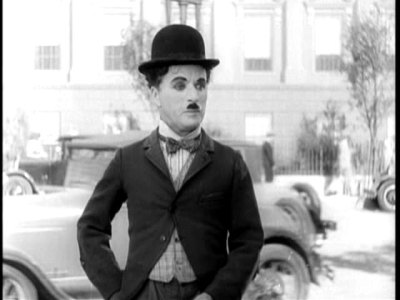 Charlie Chaplin was one of the early geniuses of film. He was also a very contradictory character. He could be incredibly generous, but was notoriously frugal. He was often very kind, like giving his leading lady Edna Purviance a pension when he was under no obligation to do so. But he was also extremely cruel. Many people in Hollywood hated Chaplin but a few were very loyal. Chaplin supported communists and socialists but didn't think their political philosophy should apply to the workers in his studio. He was a notorious womanizer, and it is almost certain that he suffered form mental illness.
Charlie Chaplin was one of the early geniuses of film. He was also a very contradictory character. He could be incredibly generous, but was notoriously frugal. He was often very kind, like giving his leading lady Edna Purviance a pension when he was under no obligation to do so. But he was also extremely cruel. Many people in Hollywood hated Chaplin but a few were very loyal. Chaplin supported communists and socialists but didn't think their political philosophy should apply to the workers in his studio. He was a notorious womanizer, and it is almost certain that he suffered form mental illness.
Charlie Chaplin was also the first international superstar, and arguably is still the most recognized person on the planet.
This mass of contradictions was also a great comic artist. The problems in his personal life seemed to feed his comic genius. The time that he was filming his greatest works were also the most turbulent in his private life. Such is the mystery of genius.
Background:
Charles Spenser Chaplin was born in London in April of 1889. His parents both toured the British music halls and had acts of their own. His father left the family when he was young (without divorcing his mother) and went on to have a good carrier on the stage. His mother, Hannah, on the other hand, started suffering from mental illness, and her venues soon started shrinking. As legend has it, one night when Charlie was five his mother entered the theater too ill (or drunk) to go on. He went on in her place and started singing one of her songs. The audience was so enchanted with the precocious little singer that they started throwing coins on the stage. Charlie stopped in mid-song and started scurrying around the stage collecting all the money. Suddenly remembering his audience, Chaplin stood up and said "Wait till I get it all, and then I'll sing a lot!" This brought roars of laughter and more coins. He made three pounds in tips that night, a huge amount in those days.
Hannah continued to deteriorate, and it soon got so bad that she could no longer work. The two of them, along with Charlie's older half brother Sydney, lived in squalid conditions various locations around London. Eventually, Hannah was admitted to a mental institution and Charlie and Syd were taken to the Hanwell School for Orphans and Destitute Children, a strict institution were children were hit with a birch rod for the smallest infractions. They were to spend eighteen months there before their mother was well enough to retrieve them. Chaplin would later refer to this time as his "incarceration."
When he was eight, Charlie's father got him a job with a traveling troupe of children clog dancers. Clogging was the rage at the time, and Charlie toured the UK with his group, The Eight Lancashire Lads, but after a year or so he was let go. Chaplin then took odd jobs where he could find them, and occasionally attended school.
As time went by, Charlie and his brother Syd tried to break into show business at various times with some success. Charlie attained a certain amount of fame in various plays as a child, but when he got older he found work hard to come by. Syd in the meanwhile was an up and coming comedian, and was eventually taken on by Fred Karno's troupe.
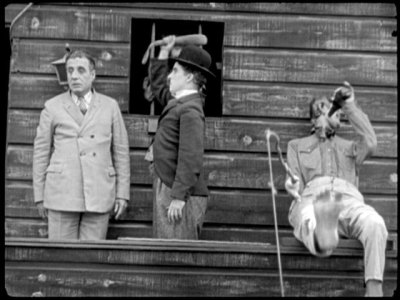 Fred Karno was the leading producer of comic plays for music halls at the time. He turned the art of comedy into a science, creating a 'fun factory' where young actors would train and study and then he would send them out on the road when they were ready. At any one time, Karno would have between six and ten troupes out touring.
Fred Karno was the leading producer of comic plays for music halls at the time. He turned the art of comedy into a science, creating a 'fun factory' where young actors would train and study and then he would send them out on the road when they were ready. At any one time, Karno would have between six and ten troupes out touring.
Syd did well under Karno, and he convinced Fred to give his brother Charlie a try. Chaplin worked hard studying comic techniques, and rose quickly through the ranks. Chaplin was the headliner during the Karno's 1910 tour of America. (Stan Laurel was also on the same tour.) Charlie was a huge hit with the American audiences. The demand for tickets was so high that the theater manager in Seattle wanted the group to perform five shows a night. Chaplin refused and even told the manager himself. Such success naturally brings the attention of Hollywood, and Charlie was recruited by Mac Sennett's Keystone Films who signed him in 1913 at $150 a week.
Charlie wasn't sure what to make of Keystone at first. The company had to produce a new two-reel comedy each and every week, and the pace was frantic. Charlie didn't like the pace or the comedy. He wanted to do more refined slapstick. He didn't feel that every short had to end with a chase, and wanted longer shots instead of the rapid cutting that Sennett employed. Chaplin argued with the directors. He was upset that they would dismissed his suggestions for the films on the grounds that they didn't have time for an elaborate set-up. Chaplin had the philosophy that making one funny film was better than making many mediocre ones. He would follow that philosophy for the rest of his career.
As his tenure at Keystone went on, Chaplin's movies became more and more popular. Fairly soon his films started outselling all the other Keystone shorts. With this success Chaplin was able to exert more control on his movies, which led to higher quality films and even bigger demand. Soon he was writing and directing all of his pictures.
When his contract was up, Chaplin was a star and wanted a star's salary. Keystone couldn't meet his price, so he signed a one year contract with Essanay for an astounding $1250 a week.
At Essanay he had more control over his movies, and ended up making 14 shorts over the course of a year. His popularity continued to grow, and "Chaplinitis" started springing up across the nation. There were songs written about him, toys and dolls with his likeness, and he even started to appear in comic strips. When his contract with Essanay was up, he was the most in demand actor in the world. He was wined and dined by several companies bidding for his service, but he ended up signing with Mutual in 1916 where he made $10,000 a week, plus bonuses. He was not only the highest paid actor; he had a higher salary than anyone in the country.
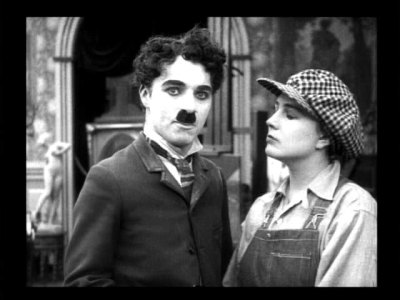 It was while Chaplin was at Keystone that he stumbled upon the outfit that makes him famous. He claimed to have found the clothes lying around the studio one rainy day, and tried them on. Baggy pants, a coat that was two sizes too small, some very large tattered shoes and a raggedy old cane. When Chaplin put them on, they would turn into the outfit of the Tramp. Though he had the clothes, and used them frequently during his time at Keystone, the character that everyone associates with the Tramp would take time to emerge.
It was while Chaplin was at Keystone that he stumbled upon the outfit that makes him famous. He claimed to have found the clothes lying around the studio one rainy day, and tried them on. Baggy pants, a coat that was two sizes too small, some very large tattered shoes and a raggedy old cane. When Chaplin put them on, they would turn into the outfit of the Tramp. Though he had the clothes, and used them frequently during his time at Keystone, the character that everyone associates with the Tramp would take time to emerge.
It was during his time with Essanay that he first discovered the personality to go with the image he had created. He would perfect the Tramp while at Mutual, and by the time he signed his contract with first National in 1918, the character would be fully formed and recognizable all over the world.
There has been a lot written about Chaplin's Tramp, and why he is so popular. I don't think there is any one aspect that makes him so appealing, there are several. First, he is a sort of universal victim. He is constantly picked on and is the lowest man on the totem pole. This makes people both identify with him and feel superior too.
His most endearing facet, to me, is his dignity. He may be poor and hungry, have nothing to his name, but he still has his pride. Whether it is dusting off the park bench that he is going to sleep on, or carefully folding a piece of rag and putting it in his coat pocket as a handkerchief, the Tramp has a stateliness about him, as if he knows that he deserves better, and that prosperity is just around the corner. This also gives him some very comic moments, but keeps him from being a clown.
The Tramp was always played sincerely too. This is an important point that is often overlooked. Chaplin never has his character smile of wink at the camera in the middle of a chase scene the way Douglas Fairbanks often did. That's because being chased wasn't a game to the Tramp it was serious. That grounding in reality made it even more humorous when he did some absurd maneuver to escape from his pursuers. It also made it easier to take him seriously when he fell in love with a beautiful young girl, or puppy dog or baby. You knew that this wasn't a lark or a gag for the Tramp; he had real emotions, and seemed like a real person.
Whatever the reason, sincerity, dignity, or some other nebulous reason, Charlie Chaplin created a character that was universally liked. From England to Japan and back again, almost every country in the world screened Chaplin's films in the teens and twenties. He is still just as popular today.
Warner Brothers in associate with MK2 editions has released their second set of Chaplin movies. These movies are available individually, or in a boxed set that comes with a two-hour documentary, Charlie: The Life and Art of Charles Chaplin (not available separately.) Each DVD is reviewed separately, but there is one thing that all of these discs have in common: they were mastered from a PAL video source and converted to NTSC. What does this mean? It means that the films run 4% faster than they should. The pitch on the sound movies seems to have been corrected, but the playing times are 4% shorter than they should be. This is very unfortunate, but not a huge deal. About the only way to notice the difference in the films is to check the run times, the slight speed up is not noticeable to the casual viewer. Even someone familiar with the movies would be very hard pressed to see the difference. Another reason that this in a non-issue with these films is that silent movies did not have a standard film rate. It wasn't until sound movies arrived that projection speeds were standardized. (That's why silent movies are always measured in reels of film and not the length of time it took to show them.) Sometimes the distributor would even send notes with the films instructing the projectionist to run certain scenes faster or slower. So the fact that these are 4% faster than an arbitrary 'silent speed' should not be a large factor when deciding whether or not to purchase this set.
Just click on a link below to read a detailed review of the DVD.
A Woman of Paris/A King in New York
Charlie: The Life and Art of Charles Chaplin
After A King in New York, Chaplin would make one last film. He directed, though did not star in, A Countess from Hong Kong in 1967. This was an attempt at a romantic comedy staring Sophia Loren and Marlon Brando, and is universally regarded as his least film.
He spent the rest of his life at his estate in Switzerland, and was regarded as a living legend and film genius. He traveled to his native England frequently and was honored in 1975 when Queen Elizabeth knighted him. He did return to the United States one last time. In 1972 he was present in Los Angeles to receive a special Oscar for his lifetime achievements.
Charles Chaplin died in his sleep on Christmas Day, 1977 at the age of 88.
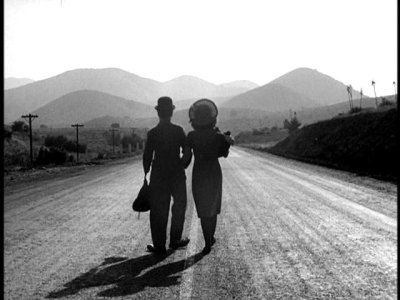
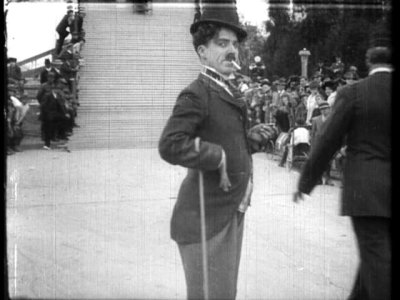 Available only with the Warner Brothers Chaplin Collection Volume Two, Charlie: The Life and Art of Charles Chaplin is a very good overview of the comedian's movies. Clocking in at slightly more then two hours, the show covers Chaplin's childhood in England, his joining Karno's theater company, and their tour of America. Once he gets to the States, the program goes into more detail, examining his time with Keystone, and covering the movies he made for Essanay, Mutual, and First National. The formation of United Artists is covered, along with the movies he made for them. His entire life is covered, and all of his most famous pictures are discusses with such people as Johnny Depp, Martin Scorsese, Richard Attenborough, Woody Allen, and some of Chaplin's children.
Available only with the Warner Brothers Chaplin Collection Volume Two, Charlie: The Life and Art of Charles Chaplin is a very good overview of the comedian's movies. Clocking in at slightly more then two hours, the show covers Chaplin's childhood in England, his joining Karno's theater company, and their tour of America. Once he gets to the States, the program goes into more detail, examining his time with Keystone, and covering the movies he made for Essanay, Mutual, and First National. The formation of United Artists is covered, along with the movies he made for them. His entire life is covered, and all of his most famous pictures are discusses with such people as Johnny Depp, Martin Scorsese, Richard Attenborough, Woody Allen, and some of Chaplin's children.
This program focuses more on Chaplin's art than his life, and only briefly talks about the problem he had in his personal life. I had no problem with that; I think it is acceptable to separate the artist from his art, though some people may not agree. Chaplin did have a very controversial life, and this is glossed over to a very large extent. The one problem I did have is that when they did talk about his personal life, they gave the impression that Chaplin was an unfortunate victim of circumstance. According to this documentary, Charlie was as pure as the driven snow, which just was not the case. It is fairly well documented that he was an adulterer, had sex with underage women, and was a chronic tax evader. Thought they did not have to dwell on these character flaws, it is very unfortunate that they did not present a balanced view of these controversies when they were mentioned. That would have made it a much stronger film.
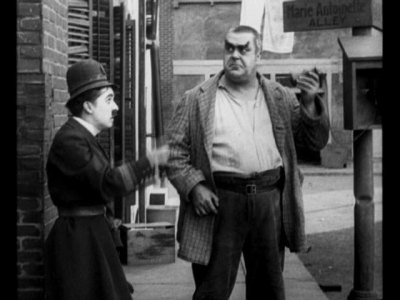 There are some inaccuracies and the truth is stretched in places in this documentary. At one point they claim that Chaplin never worked with gag writers as Lloyd and Keaton had. While he never employed people to solely create gags, there was a lot of input to his movies, and he did use writers. (Though he rarely gave them screen credits, and he was even sued for plagiarism.) The bothersome thing about that claim is that it diminishes Chaplin's genius. It assumes that the gags were what made his movies so special, and this is not true. If it were, we would remember at least a few of the myriad of Chaplin imitators that cropped up in the teens and twenties. But we don't. That's because it wasn't the gag that was so special, but Chaplin's performance of it. His body language and facial gestures could turn an average joke into something memorable. (The roll dance from The Gold Rush is a great example of this.)
There are some inaccuracies and the truth is stretched in places in this documentary. At one point they claim that Chaplin never worked with gag writers as Lloyd and Keaton had. While he never employed people to solely create gags, there was a lot of input to his movies, and he did use writers. (Though he rarely gave them screen credits, and he was even sued for plagiarism.) The bothersome thing about that claim is that it diminishes Chaplin's genius. It assumes that the gags were what made his movies so special, and this is not true. If it were, we would remember at least a few of the myriad of Chaplin imitators that cropped up in the teens and twenties. But we don't. That's because it wasn't the gag that was so special, but Chaplin's performance of it. His body language and facial gestures could turn an average joke into something memorable. (The roll dance from The Gold Rush is a great example of this.)
Though a lot of screen time is devoted to his movies, this is not a critical examination of them. There is not a lot of analysis, though there is some. It spends more time on what worked in Chaplin's movies than on the failed experiments, but that fits in with the show's overview format. They did make the mistake, in my opinion, of giving away the ends to virtually all of his feature movies. I agree that it is hard to examine Chaplin without discussing the conclusions of his movies, but this overview is aimed at people who are not intimately familiar with his movies, and they end up spoiling some great moments in his films.
This documentary was very informative for someone who is unfamiliar with Chaplin and his work. It gives an excellent introduction to his films, and how he evolved as a comedian. As someone who has read up on Chaplin a bit, I also enjoyed the documentary. There were a couple of anecdotes that I hadn't heard, and it was nice to see some of the rare behind the scenes clips that are included. Though not perfect, a good addition to the set.
The DVD:
Audio: The 5.1 audio is well suited to the documentary. With the show being mainly dialog, there is not any use made of the soundstage. The audio is clear and easily understood. There are subtitles in French, Spanish, Portuguese, Chinese, Thai, and Korean.
Video: The non-anamorphic widescreen video looks very good overall, but some of the old home movies and clips are showing their age. This is to be expected when some of the film is 80 years old. The contemporary interviews all have very good picture quality.
Extras:
There are no extras on this DVD.
Final Thoughts:
Though not a prefect documentary due to the bias in Chaplin's favor over the controversies that plagued his life, this was a very good overview of his movies and their place in the history of cinema. A nice bonus for buying the boxed set, Highly Recommended.
|
| Popular Reviews |
| Sponsored Links |
|
|
| Sponsored Links |
|
|
| Release List | Reviews | Shop | Newsletter | Forum | DVD Giveaways | Blu-Ray | Advertise |
|
Copyright 2024 DVDTalk.com All Rights Reserved. Legal Info, Privacy Policy, Terms of Use,
Manage Preferences,
Your Privacy Choices | |||||||









